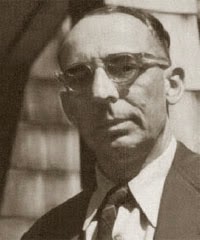By Florence Finch Kelly (1858-1939).
The Bookman, May 1915.
Online HERE.
A hundred years ago American writers were feeling a bit self-conscious about their art. Britain's political empire was at high tide, although she was locked in a military struggle with her nearest Continental rival that would in the long run cause the eventual disintegration of her imperium.
With political dominance also comes cultural influence, and Americans were still trying to shrug off an inferiority complex induced in no small part by being constantly reminded by the Brits that they were, after all, a step-child of English culture. But our author notes that while America did owe something to Britain, American writers were well on their way to producing a distinctive literature of their own, one that was, in her words, "fresh, virile, creative, a characteristic evolution of our national life."
Returning now to the narrower purposes of this particular weblog, we must give Ms. Kelly credit when she acknowledges the contributions of mystery and thriller writers (although she doesn't use those terms) to the forging of America's literature:
. . . For one form of fiction, that which depends chiefly upon incident, plot and action, we have shown particular aptitude, and we have so developed and refined it as to make it almost a distinctively American product. Perhaps it is the expression in literature of that resourcefulness and mechanical ingenuity which are national characteristics.
Louis Joseph Vance, to mention one of many American novelists who do this sort of thing most admirably, can pick up a character out of the humdrum of daily life and send him spinning through a tale as complex, as perfectly made, as finished, as trim and as swift as a high-powered automobile. Admitted that nothing like it ever happened or probably ever will happen to mortal man. But who wouldn't like to find himself suddenly whirling through such an adventure? Such fiction is the fairy-tale grown up, and it has an equal right to considera-tion.
Moreover, no matter how impossible its story may be, it expresses us spiritually in a dozen ways. You will find in it our democracy, our idealism, our need of action, our love of definite achievement, and, very often, you will find also, as in the work of Jack London and Rex Beach, swift pictures of life that are vivid with local colour and living presentations of men and women.
We are well entitled to feel pride in the perfection to which we have brought this form of fiction and the distinctively American development it has taken under our hands.The ability to tell a good story, which she finds so lacking in British literature, is a hallmark of the American genius:
. . . a novel that does not tell a good story has not sufficient reason for having been written to justify its existence as a book. The American reader, every blessed one of him, wants a story when he reads a novel—and may his taste never change! It is the eternal child in him that makes the demand, and it shows him to be a faithful lover of "the true romance."Ms. Kelly's vivid comparison of British and American literature seems especially apt, even after all this time:
. . . the method of the American novelist is like a trim schooner, scudding before the wind, with everything taut and ship-shape, while the British method is like a houseboat drifting lazily down stream, with awnings and easy-chairs and hammocks and flower-boxes filling its decks.Resource:
- Louis Joseph Vance's defense of the "puzzle novel" is HERE.
Category: Fictional criticism










.jpg)











